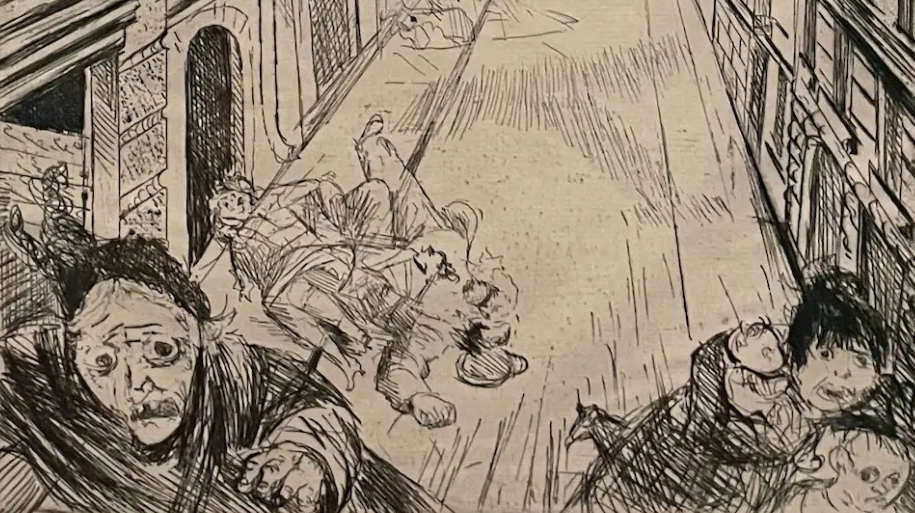LOS ANGELES — Just over a century years ago, in 1912, Otto Dix painted “Self-Portrait with Carnation.” Two years later, the world that gave rise to this Renaissance-inspired image was gone. World War I had broken out and the Europe of Hans Baldung Grien and Hans Holbein seemed unrecognizable. Yet Dix, ever the Nietzschean, knew better. Resentment and oppression had always been there, pressing their weight against the will for liberation. In 1914 they won out.
That year marked an inexorable change in much of the world that still resonates today. Every year thereafter was supposed to get better. The war was expected to end, but it didn’t — not for four years, and even then Dix, who served for the duration, was haunted by nightmares.
Imagined Fronts: The Great War and Global Media, currently at LACMA, is a well-curated overview of art and popular media related to World War I, and a solid lesson in a war that gets short shrift in US education despite its foundational role in creating our modern world.
Art can be a quagmire at such times. In their 1920 essay “Der Kunstlamp” (The Art Scoundrel), George Grosz and John Heartfield — then in the dizzying throes of Berlin Dada — railed against Oskar Kokoschka for advocating the protection of cultural heritage at a time of unrest following the Kapp-Luttwitz uprising in Dresden. Grosz and Heartfield write: “We greet with pleasure the fact that bullets whiz into the galleries and palaces, into the masterpieces of Rubens, instead of into the homes of the poor in the workers’ districts.” It’s hard to argue with that logic.
But what’s left to nourish the spirit, so to speak, when only the bleakest landscapes survive, within the world and ourselves? In 1920, the Berlin Dadaists might not have said the answer was art, yet they kept making it. Dix, who was more aesthetic than his peers, might have acknowledged art, though he may have laughed at the idea, too — or agreed but with a caveat: the nourishment has to be nasty, if it’s worth its salt.

Amid all the bombastic imagery and film clips in the exhibition is a small untitled drawing by Dix from the museum’s Rifkind Center for German Expressionist Studies. I hadn’t seen it in several years, since I was writing my dissertation on Dix and examined it in the privacy of the Rifkind Center’s library, and most people have never seen it since it’s seldom on display.
Made in the armistice year of 1918, the surface is covered in ghostly faces, minimally rendered in gray and black watercolor over pencil. Crisscrossing lines reiterate a couple of crucifixes, and hint at barbed wire. Nothing suggests it was a political statement on war — Dix’s works rarely are. Rather, it conjures a dream half-remembered, a bleak landscape that the artist survived.
For anyone who didn’t write a dissertation on Dix, his art may not seem too relevant on the surface. But what he conveys so deftly is that terror and trauma are felt, not thought, and art about these experiences fails as anything other than a didactic history when it tries to make sense of things.
The drawing is nowhere near Dix’s most gruesome or fearsome image — his 1929–32 “War” triptych in Dresden is a hellish reprisal of Matthias Grünewald’s Isenheim altarpiece and his 1924 war etchings are littered with nihilism and decay. But this small, suffocating picture, made while the war was fresh in his mind, gazing back with its spectral faces, is especially disorienting. It renders violence and terror from the inside out.
If the drawing’s feat is a glimpse of the inexpressible horror that Dix lived, the world’s response has been to make it relevant again and again.




Imagined Fronts: The Great War and Global Media continues at the Los Angeles County Museum of Art (5905 Wilshire Boulevard, Mid-Wilshire, Los Angeles) through July 7. The exhibition was curated by Timothy O. Benson, curator, Robert Gore Rifkind Center for German Expressionist Studies, LACMA.


